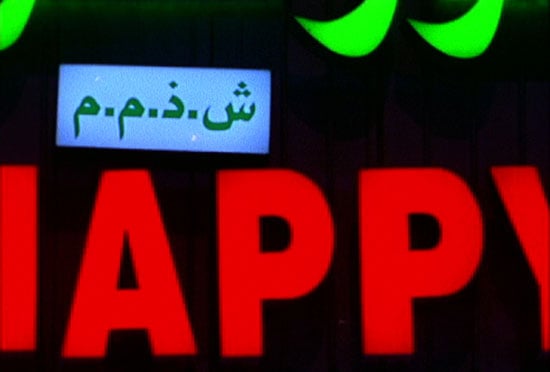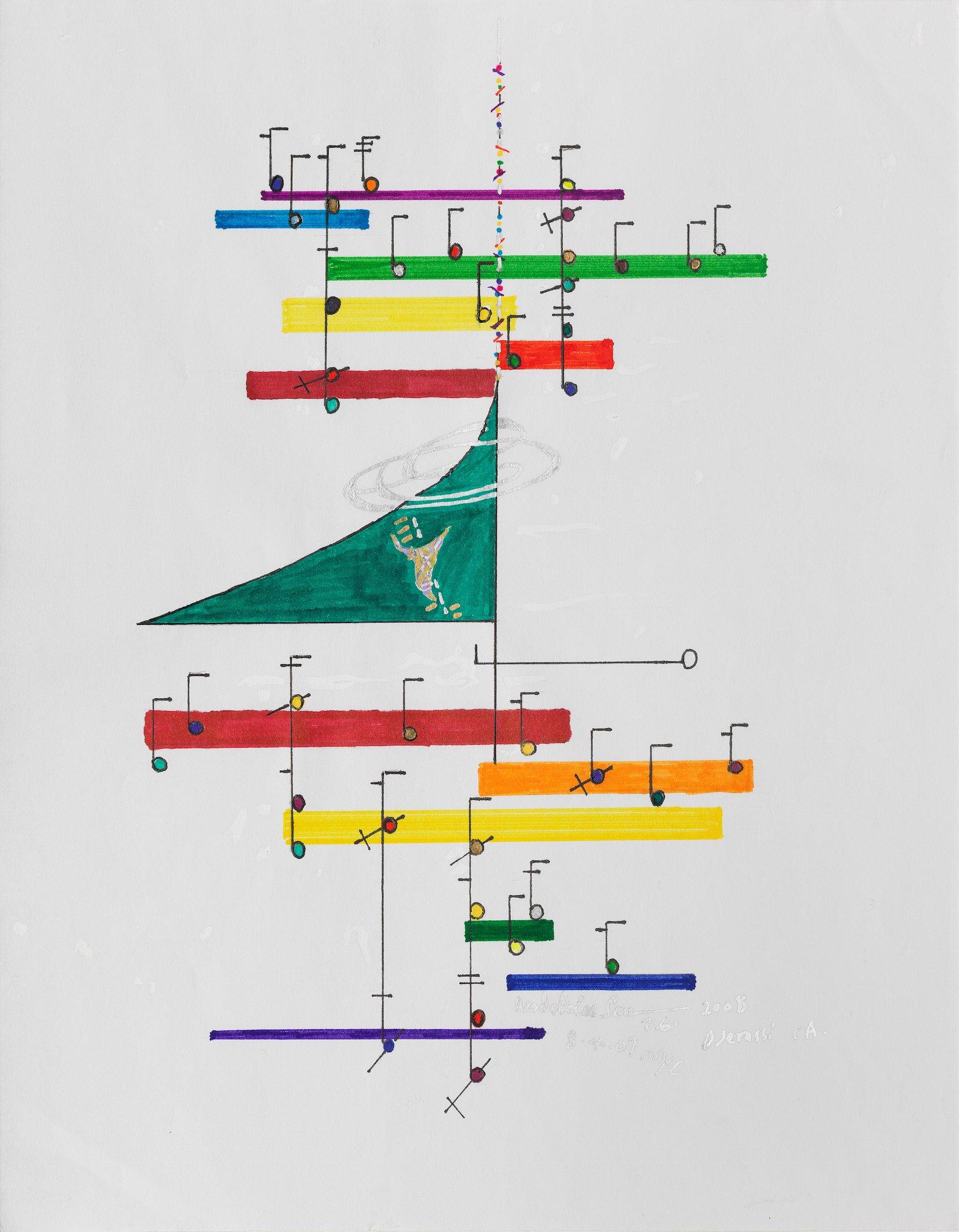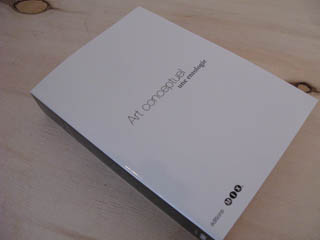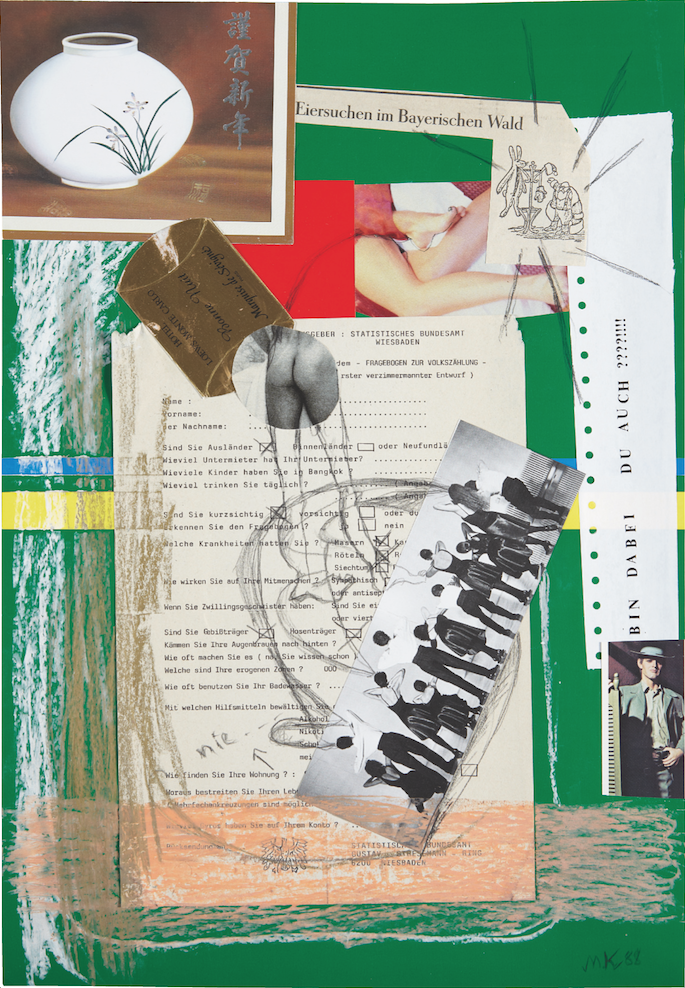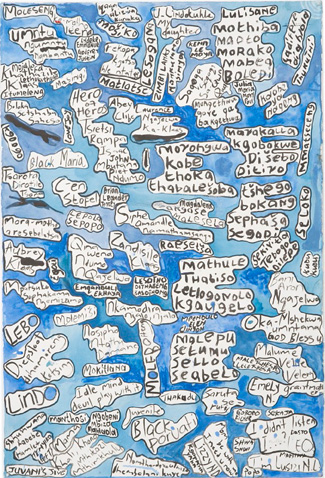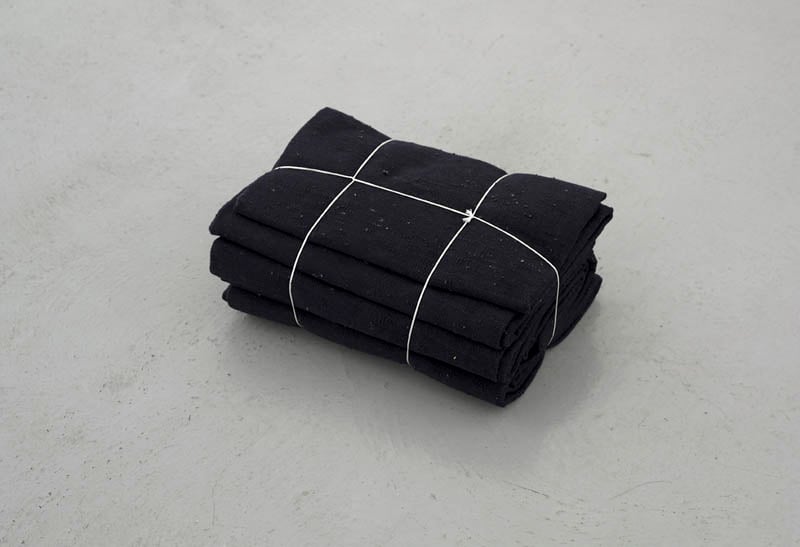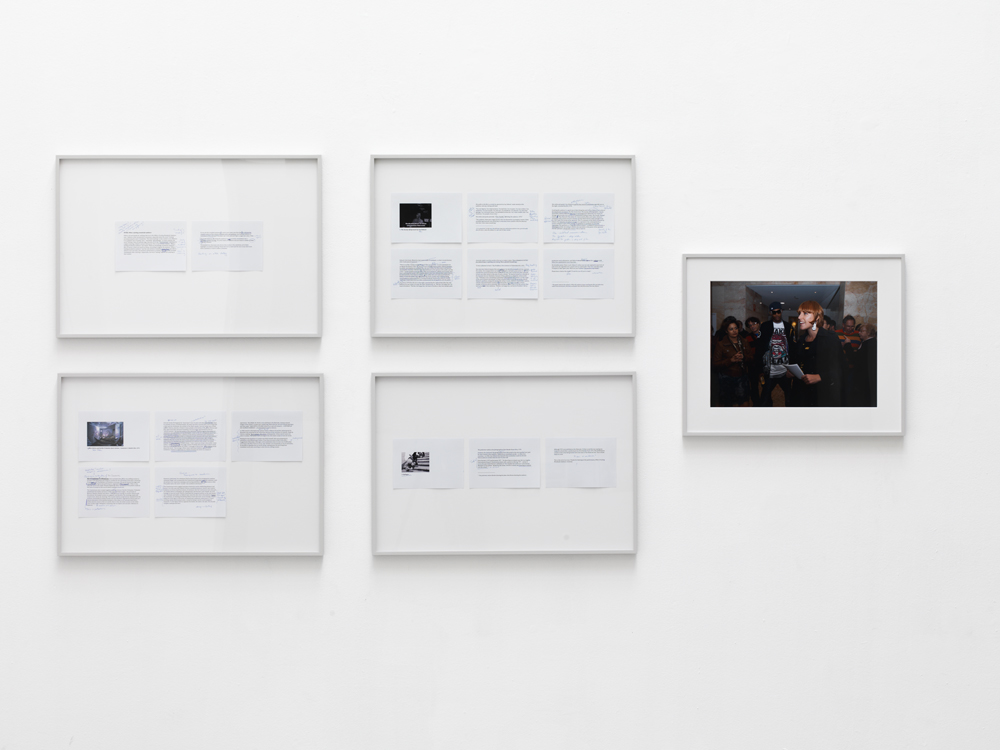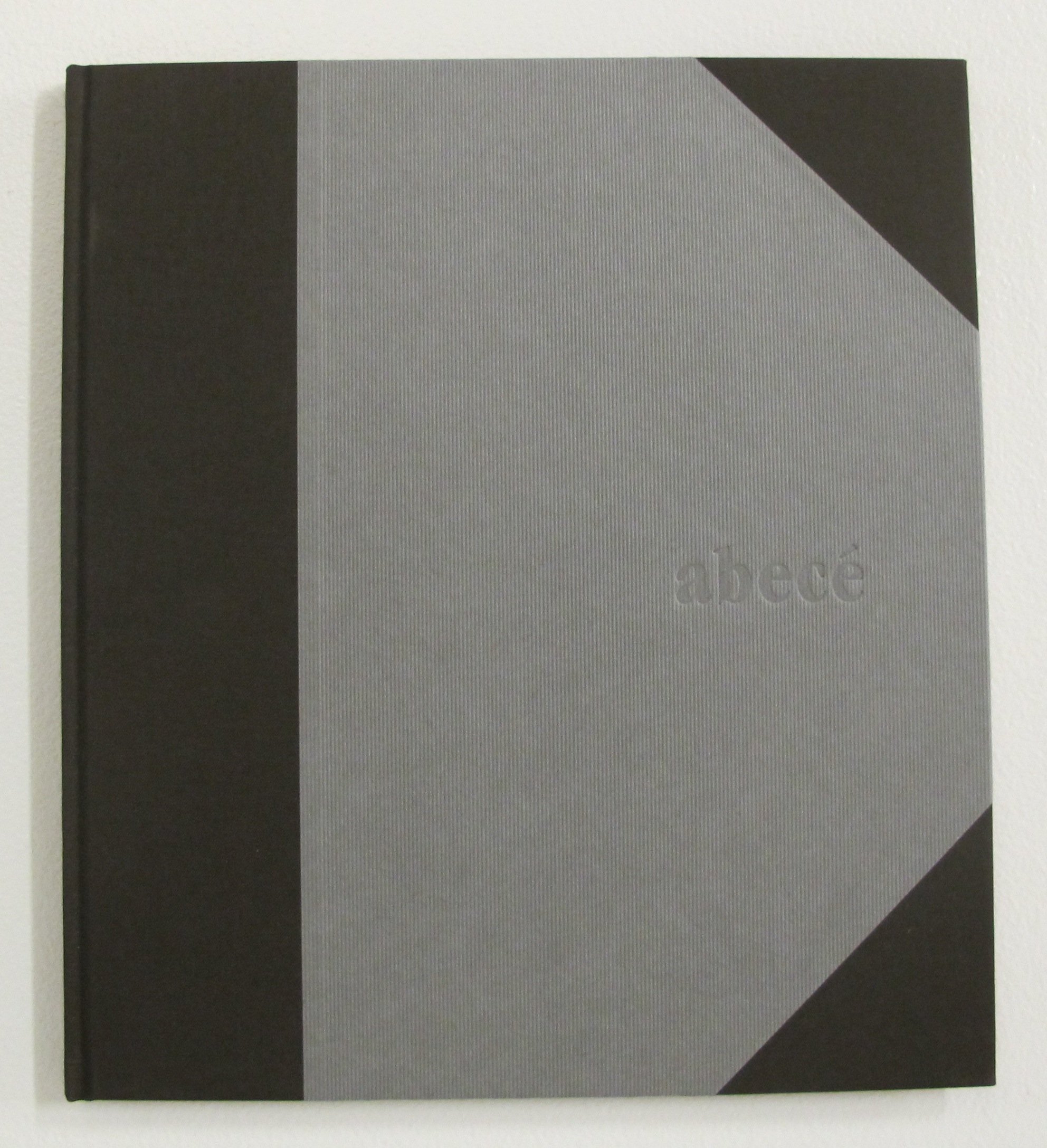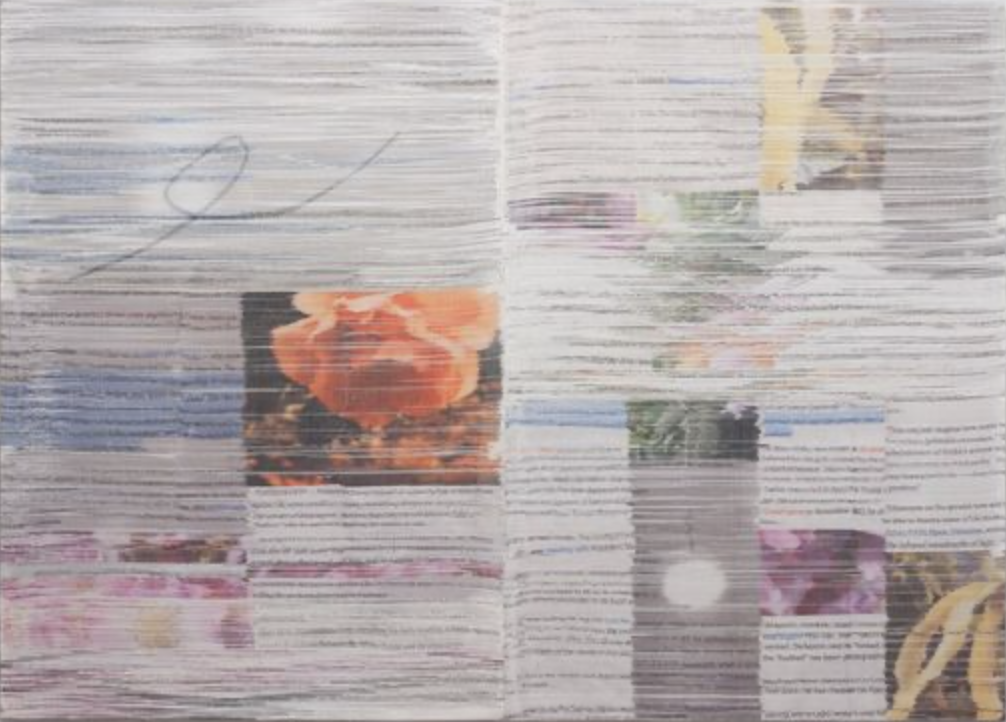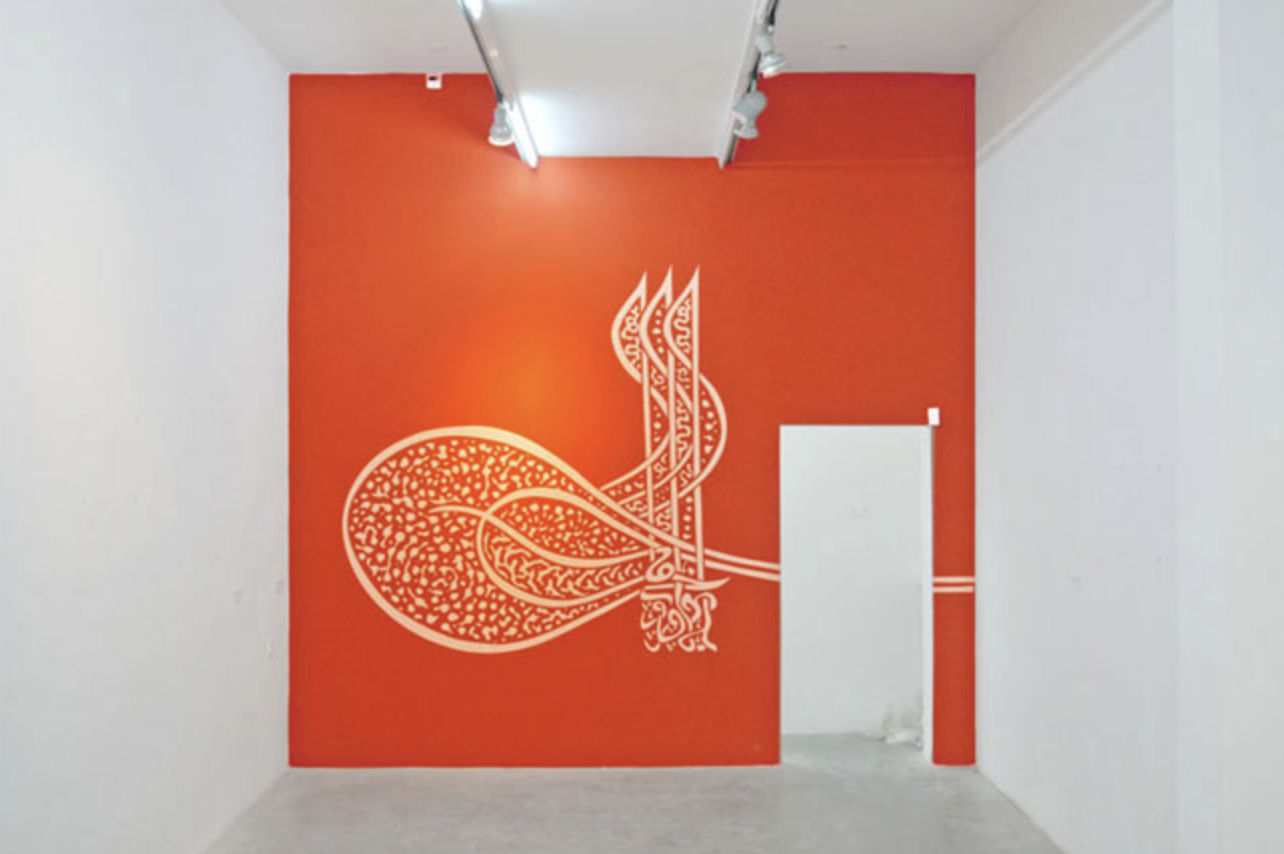
© » KADIST
Sharif Waked
Tughra is a protocol by Sharif Waked that reproduces the sixteenth century calligraphic monogram for tughra ; also known as the signature of Suleiman the Magnificent. Under Suleiman’s reign, at the beginning of the 16th century, the Ottoman empire achieved its apex both in terms of territorial extension and cultural creation. Suleiman personally instituted major judicial changes relating to society, education, taxation, and criminal law, as such he is often referred to as ‘The Lawgiver’.

© » KADIST
Chia-Wei Hsu
Stones and Elephants by Chia-Wei Hsu derives from the Malay literary classic The Hikayat Abdullah . The author Abdullah bin Abdul Kadir, who once served as the secretary of Major General William Farquhar, chronicled his life in Malaysia and published his writings in 1849. Hsu’s video installation excerpts two chap- ters from this classic.

© » KADIST
Pangrok Sulap
Drawing & Print (Drawing & Print)
All Nations are Created Special is a black and white woodcut print by the artist collective Pangrok Sulap. Emblazoned across this fantastical 10 metre long print is the Bahasa Malaysia phrase Semua Bangsa Tercipta Istimewa , which loosely translated means “All Races are Special”. Pangrok Sulap takes the translation one step further, as the title of the work declares “All Nations are Created Special”.

© » KADIST
Minia Biabiany
Qui vivra verra, Qui mourra saura is an installation by Minia Biabiany composed of the plan of a house made out of strips of salt, and a “garden” made of ceramic pieces, hanging from the ceiling and on the floor, and non woven fabric. She uses blue and red filters to alter the hues of light coming from the outside. The work focuses on the disappearance of traditional knowledge associated with the “jardin de case” outside Guadeloupean houses.

© » KADIST
Sriwhana Spong
The Fourth Notebook features a solo choreography by dancer Benjamin Ord. In an empty dance studio, Ord begins seated on his knees on the floor. He moves subtly with gentle strokes to the rhythm of a woman’s voice speaking short phrases in French.

© » KADIST
Manuel Correa
Manuel Correa’s short film Didn’t Know I Died is a testimonial portrait of the acclaimed Colombian poet Olga Elena Mattei. Earlier in her life during a simple medical operation, Mattei was declared medically dead. In the film, she recounts her first memory upon waking up, a dream.

© » KADIST
Jota Mombaça
Ghost 1: Drowning is not a poem but is not not a poem either by Jota Mombaça is part of a series of sculptures exploring water’s restless, elemental properties and what the artist describes as “the radicality of sinking”. For this project, Mombaça produced three sculptural linen works in collaboration with the waters of the San Francisco Bay (in Berkeley), the San Pablo Bay (in Richmond), and the Pacific Ocean (in Bolinas), wherein the artist submerged linen in these local waters for three to seven weeks, then dried, and installed the materials on metal armatures. Mombaça’s subsequent video waterwill (2023) is composed of various footage from the sinking, floating, and unsinking of these sculptures and those from previous connected performances.

© » KADIST
Thiago Honório
Pau-Brasil is a sculpture by Thiago Honório that references Oswald de Andrade’s 1925 classic of Brazilian modernist literature of the same title. De Andrade’s work demands the resuscitation of “Brazilian” language and culture, advocating for the cultivation of invention and an illogical, “agile and candid” attitude. In response, Honorio’s work takes the physical form of a laquered stalk of the pau brasil tree, from which de Andrade’s work drew its title, piercing the physical form of the book itself.

© » KADIST
Jesse Chun
O (for various skies) by Jesse Chun is a two-channel video sculpture that decentralizes American colonial narratives about the moon through “unlanguaging”—a methodology that the artist has conceptualized for unfixing language. The project disrupts bureaucratic documents pertaining to the United States government’s lunar colonization and militarization, such as The Lunex Project of 1958 and Project Horizon of 1959, through methods of visual, semiotic, and sonic (mis)translation and abstraction. Chun redacts the found texts, transforming them into concrete poetry, while interweaving lesser known Korean folklore about the moon, such as the precolonial Korean women’s moon dance ( ganggangsullae ) and shamanistic ritual dance for ushering the departed into another world ( gildakeum ).

© » KADIST
Maya Watanabe
Three men with their backs to each other, dressed similarly in dark colors, stare straight at the camera. They individually deliver sacred lines from the Torah, New Testament, and Qur’an in their representative languages: Old Hebrew, Greek, and Old Arabic. As the camera slowly rotates around the trio, the men begin to perform traditional manifestations of each religious cult: Torah Cantillations, Gregorian Chants, and tilawat of Al-Qur’an.

© » KADIST
Bady Dalloul
With Inner Child , Bady Dalloul continues his ongoing reflection on migration and belonging, putting in balance levantine and Japanese histories. The most recent in a series of works gathering images and sounds from the different countries the artist lived or worked in, this video is part of a multi-channel sound installation that aims to transport us into a meditative state. To do so, the artist worked with Mami Nakanishi, a trained hypnotherapist, to write a script that could reflect an internal and multilinguistic dialogue that alternates between Arabic, English, French, and Japanese.

© » KADIST
Gilad Ratman
Originally a multi-channel video installation with sculptures and sound, this iteration of The Workshop by Gilad Ratman is a three-channel distillation of the expansive project that follows a group’s underground pilgrimage from Mt. Carmel in Israel to Venice, emerging underneath the Israeli pavilion in the Venetian Giardini. Upon their arrival, the motley group of 30 non-actor participants then sculpt self-portrait busts of themselves, with microphones embedded and protruding from the sculptures.

© » KADIST
Shen Xin
Composed of five episodes, Brine Lake (A New Body) by Shen Xin is set in a fictional factory where iodine is produced as a byproduct of natural gas sourced from deep sea brine lakes. Korean, Japanese, and Russian are spoken in multiple episodes. The protagonists have multiple encounters and conversations with two unseen employees of the factory whose visions are overtaken by the camera.

© » KADIST
Cecilia Vicuña
Drawing & Print (Drawing & Print)
Palabrarma (obreros palabreando) by Cecilia Vicuña is a series of works in which the artist blends poetry, political commentary and graphic design. The title itself is a portmanteau that unites the words palabra (word) and arma (weapon) that speaks literally of the power of words through their poetic potential. A poet herself, Vicuña developed a long series of palabrarmas on diverse media that were often used as slogans in political demonstrations.

© » KADIST
Santiago Borja
Cosmic Tautology I and II are two textile pieces representative of Santiago Borja’s practice and long-standing interest in disrupting universalist assumptions of minimalism by connecting them with other, non-Western or esoteric references. They were hand-woven in Teotitlán del Valle, Oaxaca, Mexico, and are composed of nine squares, the middle one left unwoven. Their composition is based on Red Square, White Letters (1962) by Sol Lewit, but they also take cues from works like Black Series II by Frank Stella.

© » KADIST
Marwan Rechmaoui
Drawing & Print (Drawing & Print)
Throughout his career, Marwan Rechmaoui has maintained a drawing practice. During the Covid-19 pandemic lockdowns the artist spent his evenings recording thoughts and imagery on paper, inspired by events happening around him, music, his garden, and the news. These drawings are contemporaneous in their concerns and are indexical of a destitute time and space in the aesthetics they conjure.

© » KADIST
Lubaina Himid
Drawing & Print (Drawing & Print)
In 2007 Lubaina Himid began a series of works she later called Negative Positives: The Guardian Archive (2007-2017). What started out as a one-year project, in the year celebrating the bicentenary of the abolition of slavery in the UK, continued for a decade. Taking a page or a spread of The Guardian (the most liberal newspaper in the UK and her newspaper of choice), Himid sought to expose the unconscious bias manifested in a paper that prides itself on its non-discriminatory policies.

© » KADIST
Pu Yingwei
ChinaCapital: Dream, Hot Land, Interstellar Colonization by Pu Yingwei addresses a complicated phenomena of intertwined influences from different political powers, capital forces, and ideologies in the reality of China. The background of this painting is taken from an image of a Russian stamp featuring a space odyssey during the Cold War with the US. The composition juxtaposes colors from the Chinese national flag (red and yellow) and the US national flag (blue and red), echoing the current “cold war” between China and the U. S. Usually found surrounding a big star on the Chinese national flag, the 4 stars are here rearranged into a single line, symbolizing the artist’s wish for a decentralised and equal society.

© » KADIST
Lubaina Himid
Drawing & Print (Drawing & Print)
In 2007 Lubaina Himid began a series of works she later called Negative Positives: The Guardian Archive (2007-2017). What started out as a one-year project, in the year celebrating the bicentenary of the abolition of slavery in the UK, continued for a decade. Taking a page or a spread of The Guardian (the most liberal newspaper in the UK and her newspaper of choice), Himid sought to expose the unconscious bias manifested in a paper that prides itself on its non-discriminatory policies.

© » KADIST
Jibade-Khalil Huffman
Jibade-Khalil Huffman’s work brings together spoken and written language, photography, vintage television and computer animation to pay homage to African-American popular culture. Figuration (B) is a mediatic dumpster dive through the not-yet-historical past, its fantasia of purloined images flowing to an interruptive, channel-surfing logic. A stream of TV clips, commercials, news segments, video memes, and movie scenes—at times run backwards, doubled, or layered over other clips—incorporate archival and pop cultural sources layered with a soundtrack constructed of found and made sources to make something akin to a video mixtape.

© » KADIST
Mithu Sen
home, a temporary place by Mithu Sen is part of a project called AºVOID. In this fragmented mental map, the landscape is fleeting, embossed, and ethereal; there are moments of recognition and also a near-violent sudden emptying of memory. Bodies are skeletal, nature is in entropy, context is removed.

© » KADIST
Francisca Benítez
You have given the world your songs by Francisca Benítez is a poem in American Sign Language (ASL). It employs ten handshapes arranged in a numbering sequence from 1 to 10. This visual rhyme sequence is standard in Deaf poetry, as is the Tenth in Latin American popular oral/written poetry traditions.

© » KADIST
Chloé Quenum
The stained glass windows of Chloé Quenum’s Les Allégories evoke the sacred and describe the movement of a rooster in the form of patterns extracted from a wax fabric found in Benin. The in situ motif becomes a motive of situation to materialize a certain idea of the movement. Her work is a form of thought about written language transformed into a sculpted piece.

© » KADIST
Huang Xiaopeng
Four knives appearing as if thrown at the wall to alleviate frustration and boredom, form rhythmic shadows and markings of time above a translated phrase boldly printed in simplified Chinese and English. While the English reads “But Now I Manufacture Hate, Every Single Day,” the Chinese, resultant from Google Translate in 2011, reads awkwardly to something meaning “now I manufacture black special.” The term “black special” is derived from a transliteration of the word “hate” into the sound “heite”, where the corresponding written characters literally denote “black special”. The rigidity of the machine translation also preserved the syntax of English, forcing the Chinese to crudely abide by English grammar.

© » KADIST
Marwan Rechmaoui
Drawing & Print (Drawing & Print)
Throughout his career, Marwan Rechmaoui has maintained a drawing practice. During the Covid-19 pandemic lockdowns the artist spent his evenings recording thoughts and imagery on paper, inspired by events happening around him, music, his garden, and the news. These drawings are contemporaneous in their concerns and are indexical of a destitute time and space in the aesthetics they conjure.

© » KADIST
YOUNG-HAE CHANG HEAVY INDUSTRIES
To the syncopations of a jazzy soundtrack, Korean words in white against a black background flashes between an English dialogue in black text against white ground. Comprised of curt lines such as “forever” “failure” “to live,” the Korean forms non-sequiturs and double entendres to the English script following a line of questioning between a detective and a victim telling a meandering story surrounding a bullet being in a wrist, going to hospital, traveling to Japan, and the discovery of a love triangle. This narrative of a potentially grave situation is told in a nonchalant manner.

© » KADIST
Duto Hardono
Variation & Improvisation for ‘In Harmonia Progressio’ by Duto Hardono is part of a series of work that focuses on sound loops as a fundamental element of his performance – a metaphor that Hardono employs as he examines the human condition, such as time and temporal spatiality. Unlike other works, where he generates sound using analog cassette tapes, this performance uses the human voice. Participants are instructed to vocalize ‘In’, ‘Harmonia’, and ‘Progressio’ – words that make up a Latin phrase which means “progress inside harmony”.

© » KADIST
Wadada Leo Smith
Drawing & Print (Drawing & Print)
Kosmic Music is a musical score comprised of two parts: a single mixed media drawing titled Colors and Satellites, and a pair of mixed media drawings titled Koral Reef . Conceived of together as a single musical score, the three drawings exemplify a specific stage in the evolution of Wadada Leo Smith’s Ankhrasmation Language, which he has been developing since 1967. Although at first glance the works in Kosmic Music might appear abstract compositions drawn on paper, as with other scores produced by Smith, suggestions of musical structures are revealed upon closer inspection: an entanglement of musical sheets and bright geometric forms.
Gozo Yoshimasu
Gozo Yoshimasu is a prolific Japanese poet, photographer, artist and filmmaker active since the 1960s...
Lubaina Himid
- location: Zanzibar, Tanzania
- year born: 1954
- gender: female
- nationality: Tanzanian
Martin Kippenberger
- location: Vienna, Austria
- year born: 1953
- gender: male
- nationality: German
- home town: Dortmund, Germany
Marwan Rechmaoui
- location: Bayrut, Al-Lubnan
- year born: 1964
- gender: male
- nationality: Lebanese
Mithu Sen
Mithu Sen’s writing is central to her practice, as a poet from West Bengal, a region of great Indian literary history, poetic and visual tropes giving ground to her challenge of semiotics...
Margo Wolowiec
Margo Wolowiec uses her multidisciplinary practice to examine space, material versus conceptual practices, and affective responses...
Jesse Chun
Through video, drawing, sculpture, sound, installation, and publications, Jesse Chun’s multidisciplinary practice critically engages with the politics of language...
Duto Hardono
Duto Hardono is a conceptual artist and educator...
Kameelah Janan Rasheed
Kameelah Janan Rasheed is a radical self-publisher, and pamphleteer based in Brooklyn...
Pu Yingwei
Working as an artist, writer and curator, Pu Yingwei’s practice addresses key issues of our contemporary world linked to collective memory, personal history, utopia, identity, and geopolitics...
Sriwhana Spong
Indonesian-New Zealand artist Sriwhana Spong’s practice invests in notions of transition, memory, translation, and the relationship between public and private space, the intuitive and the cerebral, and the body and its surroundings...
Tarik Kiswanson
Tarik Kiswanson is a Palestinian-Swedish artist, poet and writer based in Paris...
Gyempo Wangchuk
Gyempo Wangchuk is a unique artist in the Bhutanese, and wider Himalayan context because he combines his classical training in traditional Bhutanese painting with contemporary concepts and aesthetics, as well as discreet but potent expressions of dissidence...
Jibade-Khalil Huffman
Jibade-Khalil Huffman uses performance, photography, and video that pushes the capabilities of text and image to tell stories and convey meaning...
Glenn Ligon
- location: New York, New York
- year born: 1960
- gender: male
- nationality: American
- home town: Bronx, New York
Dora Garcia
Dora Garcia was born in 1965 in Valladolid, Spain...
Santiago Borja
Santiago Borja’s work explores improbable connections between different thought systems, thus emphasizing the cannibalistic nature of modernism, and its inherently esoteric, yet seemingly “rational”, character...
Shen Xin
Shen Xin’s practice examines how emotion, judgment, and ethics are produced and articulated through individual and collective subjects...
Bady Dalloul
Bady Dalloul cunningly employs collage across various media: texts, drawings, video, and objects to produce powerful works commenting on the past and the present...
Pangrok Sulap
Pangrok Sulap is an Indigenous artist collective comprised of members from the Dusun and Murut clans of Malaysian Borneo...
Moshekwa Langa
The oeuvre of Moshekwa Langa (b...
Christine Sun Kim
- location: New York, New York
- year born: 1980
- gender: female
- nationality: American
- home town: Orange County, California
Edgar Calel
Edgar Calel is a Maya Kaqchikel artist and poet from the midwestern highlands of Guatemala...
Manuel Correa
Manuel Correa’s practice deals with the reconstruction of post-conflict intergenerational memory in contemporary societies...
Sharif Waked
Sharif Waked is a Palestinian artist who’s work enages with with Islamic culture and history, and its interaction with the Israeli occupation and hegemonic Jewish culture in Palestine...
Rachel Foster
Rachel Foster is concerned with showing the unseen...
Yangjiang Group
Zheng Guogu founded the artistic group Yangjiang Group in 2002 with Chen Zaiyan (b...
Lenora de Barros
Lenora de Barros studied linguistics and started her artistic career in the 1970s...
-
1970-1979
Cecilia Vicuña
Drawing & Print
1977(Drawing & Print) Palabrarma (obreros palabreando) by Cecilia Vicuña is a series of works in which the artist blends poetry, political commentary and graphic design...
-
1980-1989
Charles Gaines
1980To make his series Shadows (1980), Gaines subjected 20 potted plants to a uniform procedure...
Martin Kippenberger
1988Martin Kippenberger’s late collages are known for incorporating a wide range of materials, from polaroids and magazine clips to hotel stationery, decals, and graphite drawings...
Martin Kippenberger
Drawing & Print
1989(Drawing & Print) Untitled is a work on paper by Martin Kippenberger comprised of several seemingly disparate elements: cut-out images of a group of dancers, a japanese ceramic vase, and a pair of legs, are all combined with gestural, hand-drawn traces and additional elements such as a candy wrapper from a hotel in Monte Carlo and a statistical form from a federal government office in Wiesbaden, Germany...
-
2000-2009
Glenn Ligon
Drawing & Print
2000(Drawing & Print) Glenn Ligon’s diptych, Condition Repor t is comprised of two side-by-side prints...
Saâdane Afif
2005In this work, Saâdane Afif quotes André Cadere’s round wooden batons using the copy share and remix principles...
Claire Fontaine
2006Foreigners Everywhere is a series of neon signs in several different languages...
Moshekwa Langa
Drawing & Print
2006(Drawing & Print) In “Untitled II (Mapping text)”, 2009, Langa abstracts language in an attempt to change the familiar into the absurd...
Jason Dodge
2007In Algeria, Djidjiga Meffre has woven a fabric with a string, a length equal to the distance from the earth to troposphere...
Agatha Gothe-Snape
2008Agatha Gothe-Snape’s POWERPOINTS is an ongoing series of digital artworks that have been created with Microsoft PowerPoint...
Dora Garcia
Drawing & Print
2008(Drawing & Print) Dora Garcia’s work is a result of institutional critique and more generally that of language, following the conceptual artists of the 1960s like Weiner and Kosuth and Fraser from the 1980s and 1990s...
Hassan Massoudy
Drawing & Print
2008(Drawing & Print) Ranging from Baudelaire to the Koran, each of Hassan Massoudy’s drawings are titled with a quotation from a text...
Bjorn Copeland
2009Sign #1 , Sign #2 , Sign #3 were included in “Found Object Assembly”, Copeland’s 2009 solo show at Jack Hanley Gallery, San Francisco...
-
2010-2019
YOUNG-HAE CHANG HEAVY INDUSTRIES
2010To the syncopations of a jazzy soundtrack, Korean words in white against a black background flashes between an English dialogue in black text against white ground...
Huang Xiaopeng
2011Four knives appearing as if thrown at the wall to alleviate frustration and boredom, form rhythmic shadows and markings of time above a translated phrase boldly printed in simplified Chinese and English...
Pablo Accinelli
2011In Onde quer que voce esteja (2011) Accinelli sets up a row of cardboard shipping tubes of varying heights and inscribes on them in black ink the words of the title, which translates in English as “Wherever you may be.” The words, while legible, seem like fragmented lines and shapes—almost but not quite a deconstruction of the text...
Johanna Calle
Drawing & Print
2011(Drawing & Print) Johanna Calle’s Abece “K” (2011) is part of a series of drawings (compiled into an artist book called Abece ) based on the alphabet...
Natasha Wheat
2011Wheat’s work is built on a strong conceptual framework that weaves together commentary on social and political issues and the radical potential for change...
Santiago Borja
2012Cosmic Tautology I and II are two textile pieces representative of Santiago Borja’s practice and long-standing interest in disrupting universalist assumptions of minimalism by connecting them with other, non-Western or esoteric references...
Yangjiang Group
Drawing & Print
2012(Drawing & Print) One Day in the Mountain is a bilingual calligraphic performance piece written in ink superimposed with food leftover from a meal...
Emily Mast
2012Like several of Mast’s works, B!RDBRA!N (Addendum) is the result of the accumulation of details from the various chapters and formats of an evolving project...
Sharif Waked
2013Tughra is a protocol by Sharif Waked that reproduces the sixteenth century calligraphic monogram for tughra ; also known as the signature of Suleiman the Magnificent...
Maya Watanabe
2013Three men with their backs to each other, dressed similarly in dark colors, stare straight at the camera...
Elad Lassry
2013In his composition, Chocolate Bars, Eggs, Milk, Lassry’s subjects are mirrored in their surroundings (both figuratively, through the chocolate colored backdrop and the brown frame; and literally, in the milky white, polished surface of the table), as the artist plays with color, shape, and the conventions of representational art both within and outside of the photographic tradition...
Thiago Honório
2014Pau-Brasil is a sculpture by Thiago Honório that references Oswald de Andrade’s 1925 classic of Brazilian modernist literature of the same title...
Gilad Ratman
2014Originally a multi-channel video installation with sculptures and sound, this iteration of The Workshop by Gilad Ratman is a three-channel distillation of the expansive project that follows a group’s underground pilgrimage from Mt...
Gozo Yoshimasu
Drawing & Print
2014(Drawing & Print) Gozo Yoshimasu’s visual-poetry series Dear Monster (Kaibutsu-kun) explores his response to the March 2011 Tohoku earthquake and tsunami...
Gozo Yoshimasu
Drawing & Print
2014(Drawing & Print) Gozo Yoshimasu’s visual-poetry series Dear Monster (Kaibutsu-kun) explores his response to the March 2011 Tohoku earthquake and tsunami...
biarritzzz
2015biarritzzz is interested in how the development of the internet, and experimentation in the virtual world happens simultaneously with the experimentation in the material world of the human species; and how these developments reflect the precariousness of life within neoliberalism...
Gyempo Wangchuk
2016The various distinct but connected lineages of Himalayan painting remain thriving languages employed by artists from across the region to express their unique perspective in our shared contemporary world...
Jibade-Khalil Huffman
2017Jibade-Khalil Huffman’s work brings together spoken and written language, photography, vintage television and computer animation to pay homage to African-American popular culture...
Chloé Quenum
2017The stained glass windows of Chloé Quenum’s Les Allégories evoke the sacred and describe the movement of a rooster in the form of patterns extracted from a wax fabric found in Benin...
Duto Hardono
2017Variation & Improvisation for ‘In Harmonia Progressio’ by Duto Hardono is part of a series of work that focuses on sound loops as a fundamental element of his performance – a metaphor that Hardono employs as he examines the human condition, such as time and temporal spatiality...
Gozo Yoshimasu
Drawing & Print
2017(Drawing & Print) Gozo Yoshimasu’s double-sided work on paper Fire Embroidery explores his response to the March 2011 Tohoku earthquake and tsunami...
Margo Wolowiec
2017Imagine How Many by Margo Wolowiec is a woven polyester depiction of blurred text and floral images found on social media, distorted beyond complete recognition...
Juliana Huxtable
2017Herculine’s Prophecy by Juliana Huxtable features a kneeling demon-figure on what appears to be a screen-print, placed on a wooden table, which has then been photographed and digitally altered to appear like a book cover, with a title and subtitle across the top, and a poem written across the bottom...
Francisca Benítez
2018You have given the world your songs by Francisca Benítez is a poem in American Sign Language (ASL)...
Tarik Kiswanson
2018In late 2017, Kiswanson stared working with Vadim, an eleven-year-old Romanian-French boy who he met during castings for a performance...
Chia-Wei Hsu
2019Stones and Elephants by Chia-Wei Hsu derives from the Malay literary classic The Hikayat Abdullah ...
Minia Biabiany
2019Qui vivra verra, Qui mourra saura is an installation by Minia Biabiany composed of the plan of a house made out of strips of salt, and a “garden” made of ceramic pieces, hanging from the ceiling and on the floor, and non woven fabric...
Kameelah Janan Rasheed
2019Calvin Warren calls it an ‘ontological equation’/or methods of estimating the odds to rise in the coming centuries by Kameelah Janan Rasheed is part of A Casual Mathematics , a series of interpretive art diagrams, which revisit W...
-
2020-2029
Manuel Correa
2020Manuel Correa’s short film Didn’t Know I Died is a testimonial portrait of the acclaimed Colombian poet Olga Elena Mattei...
Pu Yingwei
2020ChinaCapital: Dream, Hot Land, Interstellar Colonization by Pu Yingwei addresses a complicated phenomena of intertwined influences from different political powers, capital forces, and ideologies in the reality of China...
Edgar Calel
2020The point of departure for Xar – Sueño de obsidiana by Edgar Calel is a poem that the artist wrote in Maya Kaqchikel...
Pangrok Sulap
Drawing & Print
2021(Drawing & Print) All Nations are Created Special is a black and white woodcut print by the artist collective Pangrok Sulap...
Jesse Chun
2021O (for various skies) by Jesse Chun is a two-channel video sculpture that decentralizes American colonial narratives about the moon through “unlanguaging”—a methodology that the artist has conceptualized for unfixing language...
Marwan Rechmaoui
Drawing & Print
2021(Drawing & Print) Throughout his career, Marwan Rechmaoui has maintained a drawing practice...
Marwan Rechmaoui
Drawing & Print
2021(Drawing & Print) Throughout his career, Marwan Rechmaoui has maintained a drawing practice...
Lenora de Barros
2021Lenora de Barros’s poetics are known for setting in motion an intimate relationship between image and the written word...
Jota Mombaça
2022Ghost 1: Drowning is not a poem but is not not a poem either by Jota Mombaça is part of a series of sculptures exploring water’s restless, elemental properties and what the artist describes as “the radicality of sinking”...
Bady Dalloul
2022With Inner Child , Bady Dalloul continues his ongoing reflection on migration and belonging, putting in balance levantine and Japanese histories...
Christine Sun Kim
2022Hand Palm Echo 1 is a digital animation based on Christine Sun Kim’s staircase mural at The Drawing Center in New York (10 March – 22 May, 2022)...


























